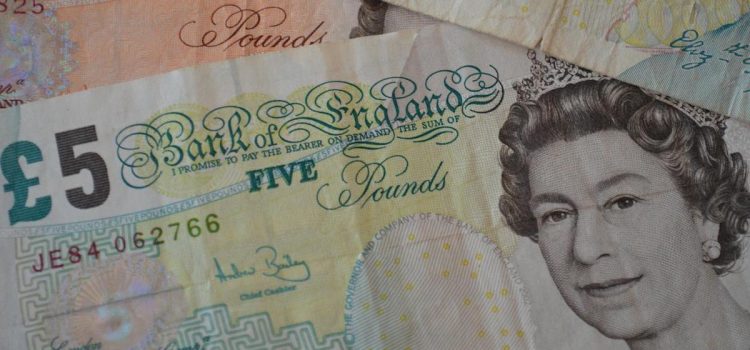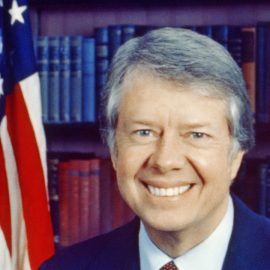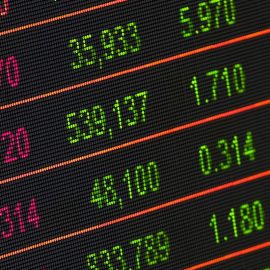

This article is an excerpt from the Shortform book guide to "Business Adventures" by John Brooks. Shortform has the world's best summaries and analyses of books you should be reading.
Like this article? Sign up for a free trial here .
Why did the UK devalue its currency in 1967? What events led up to that decision? Could the fallout have been even worse?
In 1964, the British pound was struggling. Currency hedgers and speculators were betting against it. An alliance of central banks tried to save the pound from devaluation. It worked, but only temporarily. The UK moved to devalue the pound in 1967.
Continue reading to learn more about this historic devaluation of the pound.
Devaluation of the Pound
John Brooks writes that, in 1964, Britain was running a deficit in its balance of payments, meaning the country was spending more on imports than it was earning on exports. Consequently, the price of the pound was decreasing relative to the dollar. (Shortform note: A TIME Magazine article blamed this deficit on the British government’s resistance to investing in industrialization, which meant that Britain couldn’t keep up with its competitors in terms of production and pricing. The country also had to import a lot of its food and raw materials for production.)
Based on international monetary rules set by the Bretton Woods System, the pound was allowed to fluctuate only between $2.78 and $2.82. (Shortform note: The Bretton Woods System was instituted in 1944 when 44 countries met to create an efficient foreign exchange system. The conference also led to the creation of the International Monetary Fund and the World Bank.)
If the price dipped close to the lower limit, the system required the Bank of England to purchase pounds using gold or dollars to help get the price back up. If the price fell below $2.78, the devaluation of the pound would be necessary. (Shortform note: Devaluation means a government deliberately lowers the value of the country’s currency. Governments normally do this to boost exports, improve balance of payments, and manage sovereign debt.)
Brooks explains that governments went to great lengths to prevent devaluation—for example, they imposed austerity measures and froze wages. This is because devaluation made goods more expensive at home, consequently lowering the country’s standard of living. Central bankers likewise considered devaluation a nightmare, because its effects could reverberate through markets worldwide, resulting in a global financial crisis. So, when the pound came under threat, the Federal Reserve Bank of New York rallied the central banks of Europe, Canada, and Japan to come to Britain’s aid.
(Shortform note: While governments generally try to prevent their currency from devaluing, sometimes they encourage devaluation. A strong currency doesn’t always help a country’s economy, as it makes its goods more expensive to sell abroad, hurting its exports industries which in turn hurts its domestic industry. Therefore, central bankers try to strike a balance between strengthening and devaluing their currencies, in order to benefit as many sides of their economy as possible.)
The threat to the pound came from speculators who were mounting a bear raid; just as stock market speculators might pounce on a struggling company and force the price of a stock down, currency speculators and hedgers were betting against the pound, selling the currency in the hopes of making a profit later on. This meant that the Bank of England was using up its dollar and gold reserves to buy up pounds to preserve its value. As the Bank of England was quickly running out of resources, the alliance of central banks pooled together $2.85 billion to provide a line of credit, helping Britain fend off the speculators.
(Shortform note: This type of bear run on a currency is called a speculative attack—when a large group of investors sells a country’s currency to its own government in exchange for the country’s reserve currency in the hope that the country will eventually run out of reserve currency, forcing the currency to collapse. Investors can profit off these attacks not only by shorting them, and they would when cornering the market [as we discussed earlier], but also by taking out loans in the target country’s currency, exchanging them for a foreign currency, and then converting the loan back into the target country’s currency once that currency has been devalued, pocketing a profit by doing so.)
The move worked, but only temporarily—Brooks writes that the speculators resumed their attacks within a month. Aside from trying to stave off these continued assaults, Britain also had to contend with other unfortunate events such as a seaman’s strike in 1966 and the closing of the Suez Canal in 1967, both of which greatly affected British trade. All these proved too overwhelming, and Britain was forced to devalue the pound in November 1967. Fortunately, the devaluation affected only a few small governments abroad and didn’t result in an international crisis. Some central bankers assert that, despite the eventual devaluation, their efforts weren’t in vain—had they not intervened three years earlier, there could have been more disastrous consequences.
(Shortform note: The devaluation of the pound was just one of the incidents that shed light on the inadequacies of the Bretton Woods System. The system, which obligated the U.S. to redeem foreign-held dollars with its gold reserves at a fixed price of $35 an ounce, was eventually found to be unsustainable. It effectively collapsed in 1971 when President Richard Nixon suspended the dollar’s convertibility to gold to address the country’s own balance-of-payment deficits.)

———End of Preview———
Like what you just read? Read the rest of the world's best book summary and analysis of John Brooks's "Business Adventures" at Shortform .
Here's what you'll find in our full Business Adventures summary :
- A collection of essays about the unpredictability of corporations and Wall Street
- How businesses and economies can rise and fall based on people’s behavior
- A look at the major events that shaped the financial world as we know it






